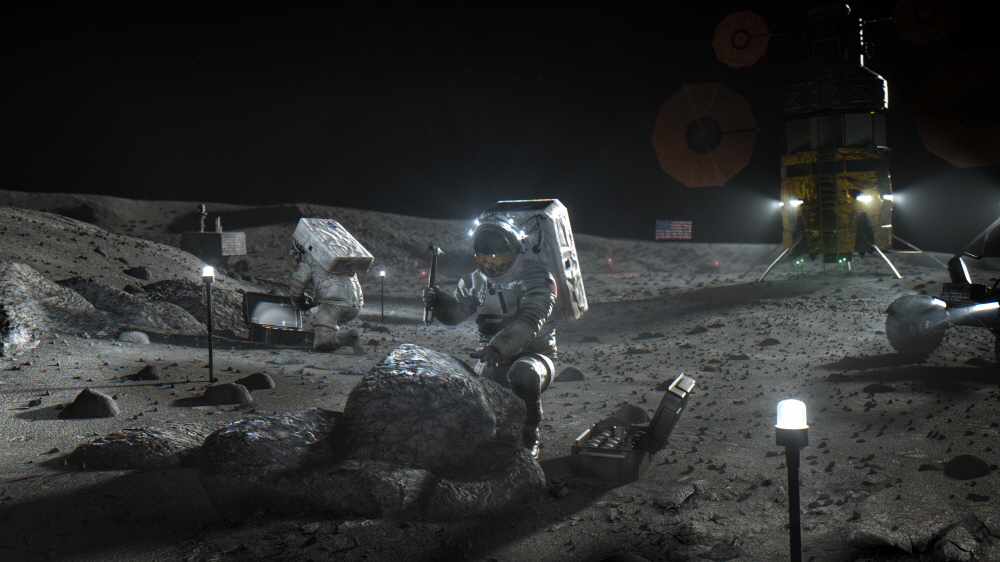
NASA has announced that it has selected three private companies to develop lunar landing ships for the Artemis program to send astronauts to the moon by 2024.
Of the three, SpaceX and Blue Origin are developing spacecraft for lunar exploration, while Dynatics is starting to develop a manned spacecraft landing system, DHLS. NASA is pursuing the plan by paying $966 million to three locations. Unlike the Apollo program, which led the spacecraft on the moon nearly 50 years ago, now NASA is pushing ahead with plans to adopt private enterprise technology, build an Earth satellite base, and ultimately bring humanity to Mars.
Founded by Amazon’s founder Jeff Bezos, Blue Origin is developing an Integrated Lander Vehicle (ILV) based on the Blue Moon lander in cooperation with Lockheed Martin, Northrop Grumman, and Draper Labs. It plans to launch its own rocket, New Glenn, or the Vulcan rocket from United Launch Aliancs (ULA).
SpaceX, led by Elon Musk, began their first manned mission with NASA in early April using the Crew Dragon spacecraft. It is also developing Starship, a large rocket and spacecraft that can carry more than 100 astronauts on the moon. Starship is expected to fly not only to the moon, but also to Mars in the future. A prototype is currently being built.
Dynamics combines 25 subcontractors to develop DHLS. The lander concept has two solar arrays on the top and a crew cargo on the bottom. In addition, Boeing, which is likely to participate in the development of the lunar landing ship, was not selected this time.
The development of the large rocket SLS (Space Lauch System) is delayed on an annual basis and is experiencing cost overruns. In addition, the spacecraft CST-100 Starliner, which was competing for development with SpaceX, returned to the ground without docking to the ISS due to a software error in the first unmanned mission.
NASA was envisioning building a space station called the lunar orbital platform gateway over the moon, and the rocket on Earth would first dock with this gateway and point the astronauts at the moon from the lander. However, this selection of private companies first aims to send astronauts to the moon by 2024. NASA explains that it will not need a gateway to reach the moon by 2024.
However, all three sites have not even completed the prototype of the lander. There are only four years left until 2024, and you may be concerned that the development of a spacecraft that arrives with astronauts on the moon will be late. NASA has stopped developing SLS and Orion spacecraft due to Corona 19. Related information can be found here .


















Add comment